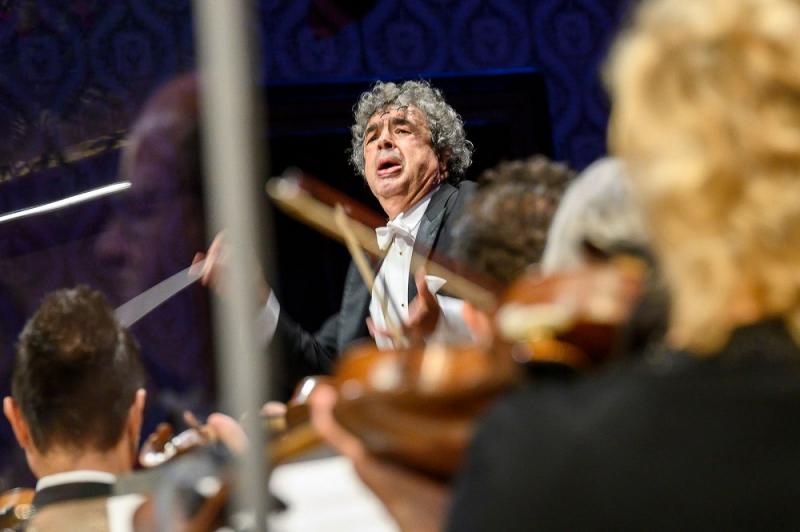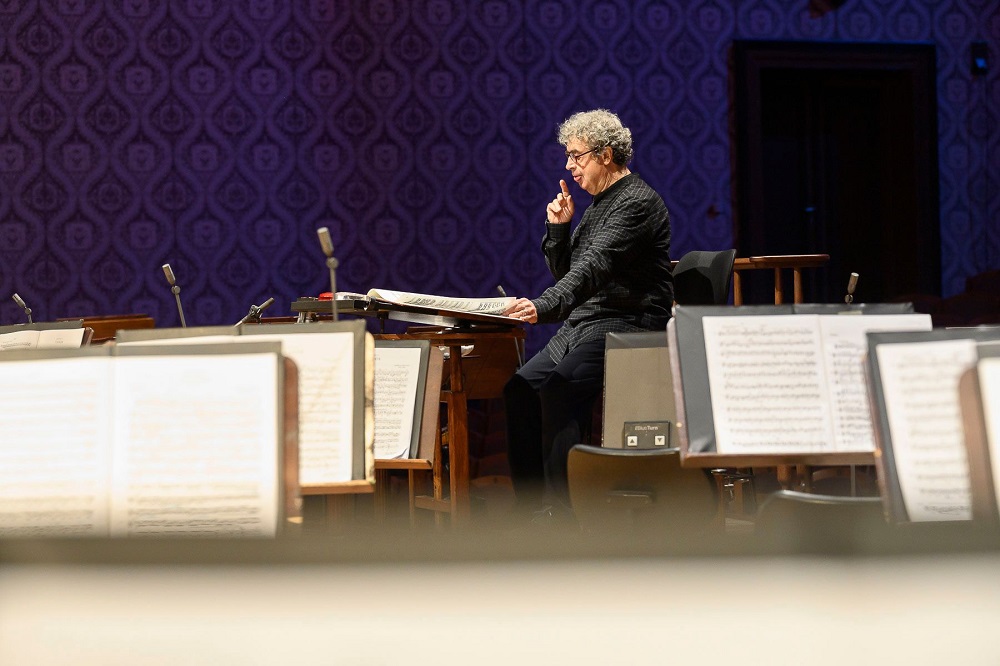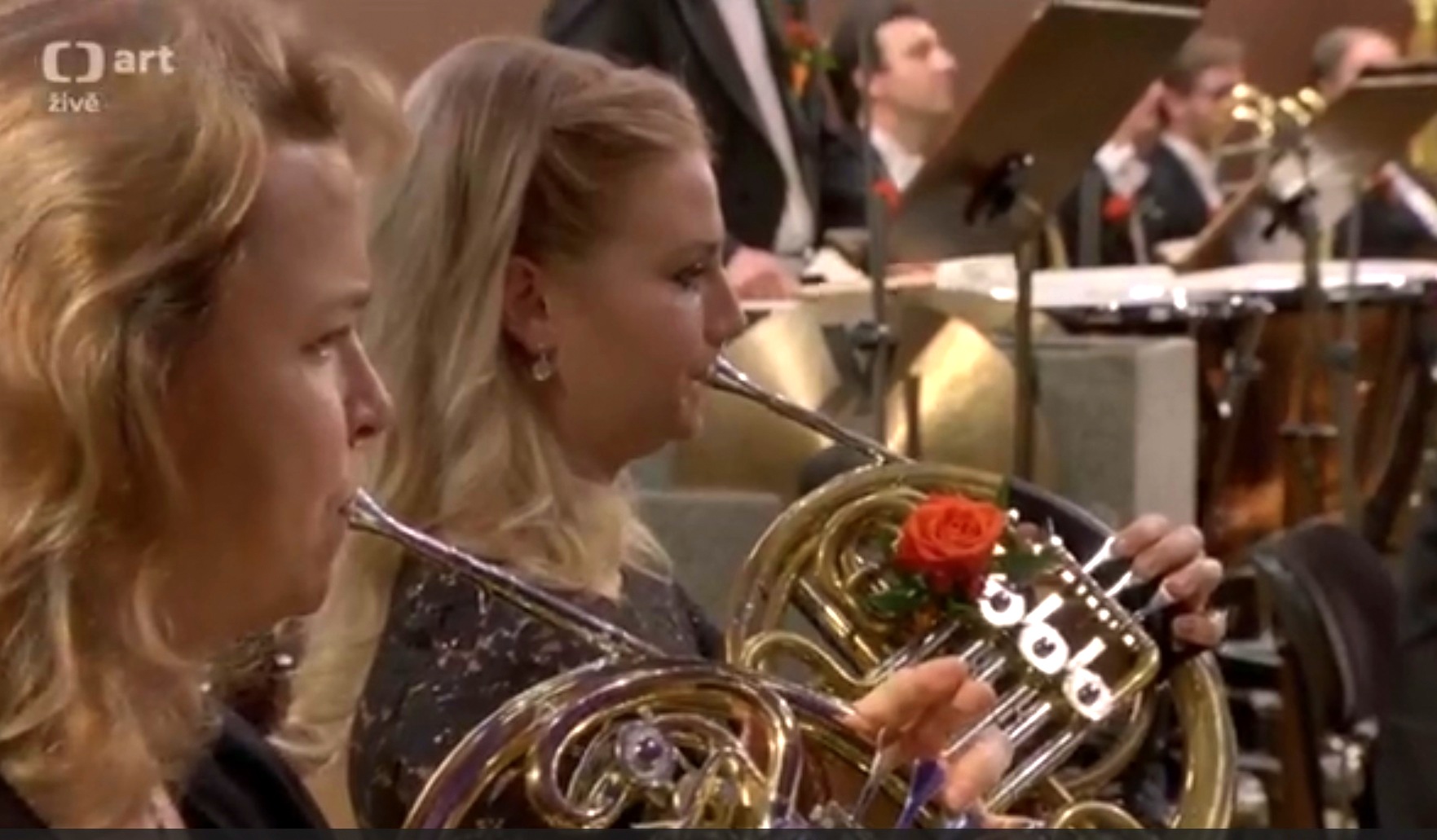Má Vlast, Czech Philharmonic, Bychkov online review – finest silk for Velvet Revolution anniversary concert | reviews, news & interviews
Má Vlast, Czech Philharmonic, Bychkov online review – finest silk for Velvet Revolution anniversary concert
Má Vlast, Czech Philharmonic, Bychkov online review – finest silk for Velvet Revolution anniversary concert
Smetana's national epic comes up fresh and meaningful in a miraculous online happening

It was Mahler as conductor who made the famous declaration that “Tradition ist Schlamperei” (sloppiness), or something along those lines.
They were to have taken it one step further at the traditional opening of the Prague Spring Festival in May; impossible. And this performance on the 31st anniversary of Czechia’s Velvet Revolution should also have been before an audience; similarly out of the question owing to a dramatic rise in levels of Covid-19 infection the country had managed to avoid earlier in the year. But what lives in the response of players to conductor and his to them is still remarkable. Bychkov told me last year that they would probably record it together only after further airings in 2022, his 70th birthday year; but I’d hasten to get hold of this performance, sound-engineered beautifully to solve any problems inherent in the Rudolfinum, if it came out on CD.
Like the supernatural army that appears to a shepherd in the legend of Blaník hill – subject of the last of Smetana’s six tone-poems based on history, myth and natural landscapes – certain performances and even a withholding have been a numinous source of justifiable national pride: the one conducted by Václav Talich in 1939, followed by the spontaneous singing of the national anthem; the performance that the musicians refused to give on 17 November 1989 in response to repressive measures before the Velvet Revolution had its way and a proper celebration happened on the 24th; former exile Rafael Kubelík returning to conduct an unforgettable interpretation at the 1990 Spring Festival with Václav Havel present. If anything, the playing, especially from the exquisite woodwind, has become ever more refined; the sheer sonic beauty of this performance could hardly be surpassed. It's frankly miraculous that it happened at all under present circumstances; all players were tested and able to participate. (Pictured below: Bychkov studying the score in rehearsal) This Má vlast seems to me even more fluid and caressed than the interpretation I heard a year ago; the glorious, tear-jerking theme of the opening Vyšehrad (the castle south of Prague), inimitably introduced by harpists Jana Boušková and Barbara Pazourová, shines from within. Perhaps there’s already an inclination to will it to be so, but I doubt if any other orchestra in the world could play this so naturally and so movingly. Vltava (aka the River Moldau) flows even more limpidly than before, with bewitching flute playing and a phosphorescent evening scene with nymphs, leading to a wonderful transition back to the river’s onward movement. Strings sing like human voices – always the aim, of course – in the operatic drama of warrior maiden Šárka’s revenge on a male army, even if I’ve heard wilder lashings as the final onslaught begins, but Bychkov unleashes full excitement in the last bars.
This Má vlast seems to me even more fluid and caressed than the interpretation I heard a year ago; the glorious, tear-jerking theme of the opening Vyšehrad (the castle south of Prague), inimitably introduced by harpists Jana Boušková and Barbara Pazourová, shines from within. Perhaps there’s already an inclination to will it to be so, but I doubt if any other orchestra in the world could play this so naturally and so movingly. Vltava (aka the River Moldau) flows even more limpidly than before, with bewitching flute playing and a phosphorescent evening scene with nymphs, leading to a wonderful transition back to the river’s onward movement. Strings sing like human voices – always the aim, of course – in the operatic drama of warrior maiden Šárka’s revenge on a male army, even if I’ve heard wilder lashings as the final onslaught begins, but Bychkov unleashes full excitement in the last bars.
By the end of Šárka, we’ve reached the midway point, and it’s impressive to see a second roster of wind and brass players replace some of the ones who’ve participated in the first three tone-poems: I was especially delighted to see the arrival of oboist Jana Brožková, who led the rustic woodwind idyll at the heart of Blánik so exquisitely last year; her sensitivity is equal here. Listening through headphones didn’t give me the same deep sound I heard then – nothing online can compare to the live onrush of wild beauty at the start of From Bohemia’s Woods and Fields. But the radical modernism of the ‘”lost in thickets” fugue which follows, saved by another of Smetana’s great patriotic melodies, is still riveting, and it’s admirable the way the camerawork gets into the very wood of the violins. (Pictured below: two horns and one rose in a still from the Czech television live broadcast) Sophistication like this sometimes tempers any putative wildness, but that’s often a virtue when Smetana so often goes at it with piccolo, cymbals and triangle; you don’t feel the overkill here. And Bychkov finds delicious humour in the perky march which takes us out of battlefield aggression. Total vigilance is apparent not only in his conducting but also in the physical intensity and freedom of the players, with the example given by leaders/concertmasters Josef Špaček and Jan Mráček – both fine soloists in their own right. Quibbles about the filming – I know the lighting is an attempt to reproduce the colours of the Czech flag, but the Rudolfinum looks better in its natural state, and there’s brief pixilation on each of the many changes of camera angle – pale into insignificance given the depth and breadth of the performance. You may hear a different interpretation, but probably not a better, unless Bychkov and the players excel themselves in 2022. Catch it while you can.
Sophistication like this sometimes tempers any putative wildness, but that’s often a virtue when Smetana so often goes at it with piccolo, cymbals and triangle; you don’t feel the overkill here. And Bychkov finds delicious humour in the perky march which takes us out of battlefield aggression. Total vigilance is apparent not only in his conducting but also in the physical intensity and freedom of the players, with the example given by leaders/concertmasters Josef Špaček and Jan Mráček – both fine soloists in their own right. Quibbles about the filming – I know the lighting is an attempt to reproduce the colours of the Czech flag, but the Rudolfinum looks better in its natural state, and there’s brief pixilation on each of the many changes of camera angle – pale into insignificance given the depth and breadth of the performance. You may hear a different interpretation, but probably not a better, unless Bychkov and the players excel themselves in 2022. Catch it while you can.
rating
Explore topics
Share this article
The future of Arts Journalism
You can stop theartsdesk.com closing!
We urgently need financing to survive. Our fundraising drive has thus far raised £49,000 but we need to reach £100,000 or we will be forced to close. Please contribute here: https://gofund.me/c3f6033d
And if you can forward this information to anyone who might assist, we’d be grateful.

Subscribe to theartsdesk.com
Thank you for continuing to read our work on theartsdesk.com. For unlimited access to every article in its entirety, including our archive of more than 15,000 pieces, we're asking for £5 per month or £40 per year. We feel it's a very good deal, and hope you do too.
To take a subscription now simply click here.
And if you're looking for that extra gift for a friend or family member, why not treat them to a theartsdesk.com gift subscription?
more Classical music
 Cho, LSO, Pappano, Barbican review - finely-focused stormy weather
Chameleonic Seong-Jin Cho is a match for the fine-tuning of the LSO’s Chief Conductor
Cho, LSO, Pappano, Barbican review - finely-focused stormy weather
Chameleonic Seong-Jin Cho is a match for the fine-tuning of the LSO’s Chief Conductor
 Classical CDs: Shrouds, silhouettes and superstition
Cello concertos, choral collections and a stunning tribute to a contemporary giant
Classical CDs: Shrouds, silhouettes and superstition
Cello concertos, choral collections and a stunning tribute to a contemporary giant
 Appl, Levickis, Wigmore Hall review - fun to the fore in cabaret and show songs
A relaxed evening of light-hearted fare, with the accordion offering unusual colours
Appl, Levickis, Wigmore Hall review - fun to the fore in cabaret and show songs
A relaxed evening of light-hearted fare, with the accordion offering unusual colours
 Lammermuir Festival 2025, Part 2 review - from the soaringly sublime to the zoologically ridiculous
Bigger than ever, and the quality remains astonishingly high
Lammermuir Festival 2025, Part 2 review - from the soaringly sublime to the zoologically ridiculous
Bigger than ever, and the quality remains astonishingly high
 BBC Proms: Ehnes, Sinfonia of London, Wilson review - aspects of love
Sensuous Ravel, and bittersweet Bernstein, on an amorous evening
BBC Proms: Ehnes, Sinfonia of London, Wilson review - aspects of love
Sensuous Ravel, and bittersweet Bernstein, on an amorous evening
 Presteigne Festival 2025 review - new music is centre stage in the Welsh Marches
Music by 30 living composers, with Eleanor Alberga topping the bill
Presteigne Festival 2025 review - new music is centre stage in the Welsh Marches
Music by 30 living composers, with Eleanor Alberga topping the bill
 Lammermuir Festival 2025 review - music with soul from the heart of East Lothian
Baroque splendour, and chamber-ensemble drama, amid history-haunted lands
Lammermuir Festival 2025 review - music with soul from the heart of East Lothian
Baroque splendour, and chamber-ensemble drama, amid history-haunted lands
 BBC Proms: Steinbacher, RPO, Petrenko / Sternath, BBCSO, Oramo review - double-bill mixed bag
Young pianist shines in Grieg but Bliss’s portentous cantata disappoints
BBC Proms: Steinbacher, RPO, Petrenko / Sternath, BBCSO, Oramo review - double-bill mixed bag
Young pianist shines in Grieg but Bliss’s portentous cantata disappoints
 theartsdesk at the Lahti Sibelius Festival - early epics by the Finnish master in context
Finnish heroes meet their Austro-German counterparts in breathtaking interpretations
theartsdesk at the Lahti Sibelius Festival - early epics by the Finnish master in context
Finnish heroes meet their Austro-German counterparts in breathtaking interpretations
 Classical CDs: Sleigh rides, pancakes and cigars
Two big boxes, plus new music for brass and a pair of clarinet concertos
Classical CDs: Sleigh rides, pancakes and cigars
Two big boxes, plus new music for brass and a pair of clarinet concertos
 Waley-Cohen, Manchester Camerata, Pether, Whitworth Art Gallery, Manchester review - premiere of no ordinary violin concerto
Images of maternal care inspired by Hepworth and played in a gallery setting
Waley-Cohen, Manchester Camerata, Pether, Whitworth Art Gallery, Manchester review - premiere of no ordinary violin concerto
Images of maternal care inspired by Hepworth and played in a gallery setting
 BBC Proms: Barruk, Norwegian Chamber Orchestra, Kuusisto review - vague incantations, precise laments
First-half mix of Sámi songs and string things falters, but Shostakovich scours the soul
BBC Proms: Barruk, Norwegian Chamber Orchestra, Kuusisto review - vague incantations, precise laments
First-half mix of Sámi songs and string things falters, but Shostakovich scours the soul

Add comment